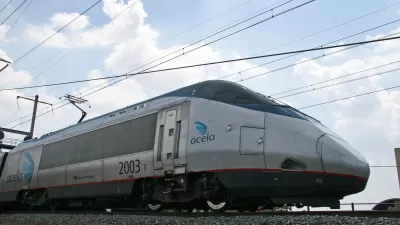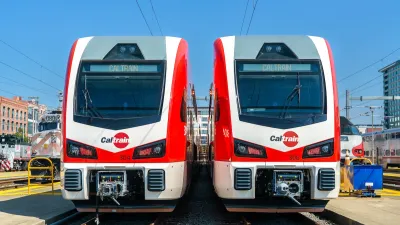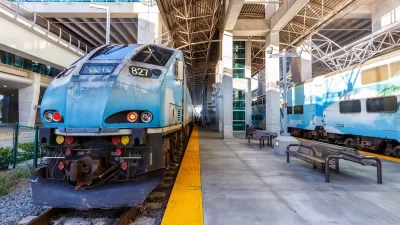The Silver Line extends passenger train service into Loudon County and adds new connections to the region’s airports.

A long-awaited rail project opening November 15 will connect the Washington, D.C. region to Dulles International Airport, report Justin George and Luz Lazo for the Washington Post.
“While four years behind schedule, the $3 billion project will bring the first rail connections between the Washington region’s largest economic powerhouses — downtown D.C. and Tysons — the area’s international airport and the nation’s wealthiest county.” The 11.5 mile extension includes six new stations, bringing passenger rail to Loudon County.
The project, originally slated to open in 2018, “was bogged down by shifting storm water management requirements, falsified testing of troublesome concrete panels and a related $1 million settlement, the conviction of a subcontractor’s former manager on a wire fraud charge and a work stoppage over cracks in the concrete girders that support elevated tracks near the Dulles Airport station.”
The Silver Line will run every 15 minutes, with headways expected to drop in the next six months. According to the article, “Trains eventually will operate every 10 minutes during rush hour, every 12 minutes during midday, evening and weekends, and every 15 minutes after 9:30 p.m.”
The source article provides more detail about the new service, connections to other Metrorail and bus services, and fares. The authors also mention that Metro will discontinue some bus lines once the Silver Line is in service.
FULL STORY: The Silver Line to Dulles is opening Nov. 15. Here’s what to know.

Study: Maui’s Plan to Convert Vacation Rentals to Long-Term Housing Could Cause Nearly $1 Billion Economic Loss
The plan would reduce visitor accommodation by 25,% resulting in 1,900 jobs lost.

North Texas Transit Leaders Tout Benefits of TOD for Growing Region
At a summit focused on transit-oriented development, policymakers discussed how North Texas’ expanded light rail system can serve as a tool for economic growth.

Why Should We Subsidize Public Transportation?
Many public transit agencies face financial stress due to rising costs, declining fare revenue, and declining subsidies. Transit advocates must provide a strong business case for increasing public transit funding.

How to Make US Trains Faster
Changes to boarding platforms and a switch to electric trains could improve U.S. passenger rail service without the added cost of high-speed rail.

Columbia’s Revitalized ‘Loop’ Is a Hub for Local Entrepreneurs
A focus on small businesses is helping a commercial corridor in Columbia, Missouri thrive.

Invasive Insect Threatens Minnesota’s Ash Forests
The Emerald Ash Borer is a rapidly spreading invasive pest threatening Minnesota’s ash trees, and homeowners are encouraged to plant diverse replacement species, avoid moving ash firewood, and monitor for signs of infestation.
Urban Design for Planners 1: Software Tools
This six-course series explores essential urban design concepts using open source software and equips planners with the tools they need to participate fully in the urban design process.
Planning for Universal Design
Learn the tools for implementing Universal Design in planning regulations.
Ascent Environmental
Borough of Carlisle
Institute for Housing and Urban Development Studies (IHS)
City of Grandview
Harvard GSD Executive Education
Toledo-Lucas County Plan Commissions
Salt Lake City
NYU Wagner Graduate School of Public Service





























